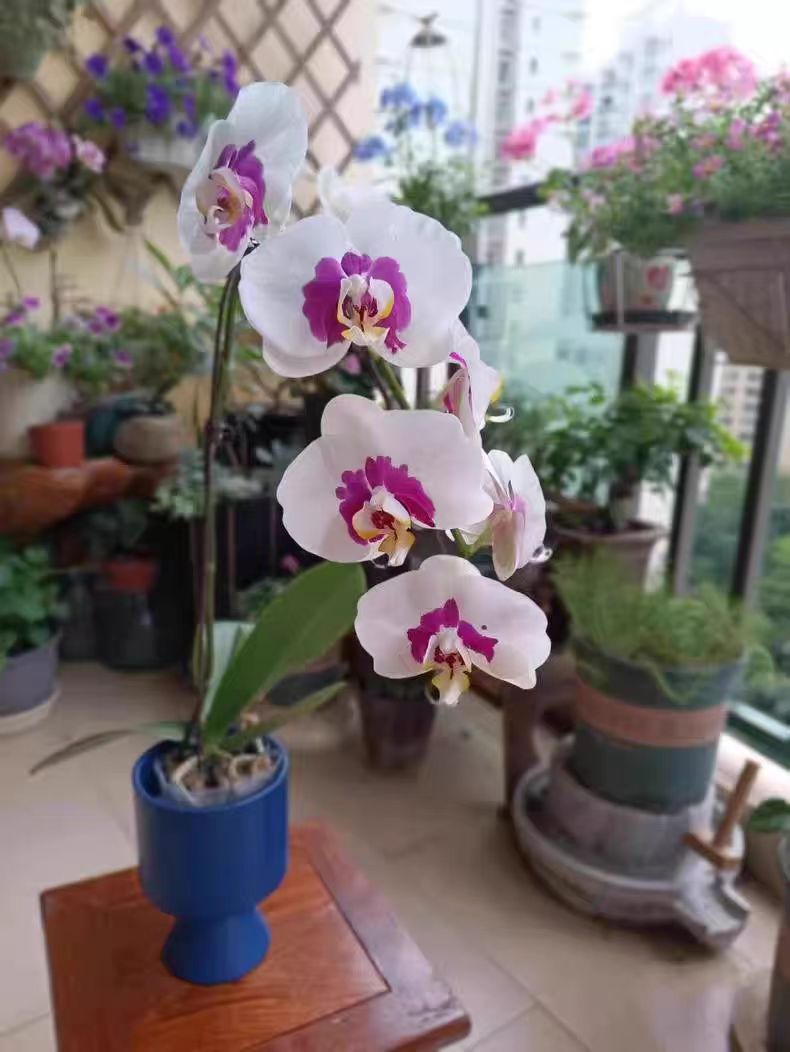In flower cultivation, choosing the right cultivation container is crucial for the growth of plants. As a popular indoor ornamental plant, moth orchids (Phalaenopsis) are particularly particular about the choice of container during cultivation. The nutrient cup, a cultivation container designed specifically for the root development of plants, plays an important role in the cultivation of moth orchids.
The primary function of the nutrient cup for moth orchids is to provide a stable and suitable growth environment for the plants. The nutrient cup can be filled with a special cultivation substrate, which is usually rich in various nutrients required for the growth of moth orchids, such as macronutrients like nitrogen, phosphorus, and potassium, as well as micronutrients like iron, zinc, and manganese. Compared with ordinary flower pots, the material and design of the nutrient cup give it an advantage in nutrient retention. It can effectively reduce the loss of nutrients, ensuring that moth orchids have a sufficient supply of nutrients throughout their growth process, thereby promoting the development of the plant's roots, the growth of leaves, and the differentiation of flower buds.
In addition, the nutrient cup has good water - retaining properties. Moth orchids are sensitive to water. They cannot be in a humid environment for a long time, nor can they lack water. The material and structure of the nutrient cup can regulate the evaporation and infiltration of water to a certain extent, maintaining moderate humidity in the substrate. When watering, the excess water can be drained in a timely manner to avoid waterlogging, which may lead to root rot. During a drought, the nutrient cup can retain some water, providing a continuous water supply for moth orchids and ensuring the stability of plant growth.
The nutrient cup also plays an important role in root protection. It can provide a relatively independent and safe space for the roots of moth orchids, reducing the impact of external physical damage on the roots. At the same time, the nutrient cup helps the roots grow and distribute neatly, facilitating the maintenance of root integrity during transplantation, improving the survival rate of moth orchids and the speed of seedling recovery.
So, is it breathable to cultivate moth orchids in nutrient cups? The answer is yes. Currently, the commonly seen nutrient cups for moth orchids on the market are mostly made of plastic. This kind of nutrient cup is equipped with a large number of fine air - vents on the cup wall and the bottom. These air - vents can ensure the circulation of air inside the substrate, allowing the roots to breathe fresh oxygen. Compared with traditional flower pots, the air - vent design of the nutrient cup is more scientific and reasonable, which greatly improves the air permeability of the substrate.
The material of the nutrient cup itself has certain water - permeability and air - permeability, which can accelerate the evaporation of water and the exchange of gases. When the external environment is humid, the excess water vapor can be discharged through the air - vents of the nutrient cup and the material itself, avoiding excessive humidity in the substrate and creating a dry and breathable growth environment for the roots of moth orchids. Moreover, the well - ventilated nutrient cup can effectively inhibit the growth of harmful microorganisms, reduce the occurrence of root diseases, and ensure the healthy growth of moth orchids.
In conclusion, the nutrient cup for moth orchids can not only provide stable nutrition and water for moth orchids, protect the roots, but also has good air - permeability. It creates superior conditions for the growth of moth orchids in many aspects and is an ideal container for cultivating moth orchids. Whether it is a novice in flower cultivation or an experienced flower lover, the reasonable use of nutrient cups can help improve the cultivation effect of moth orchids.
What are the functions of the nutrient cup for moth orchids?

Share with
Tagged in :




Leave a Reply